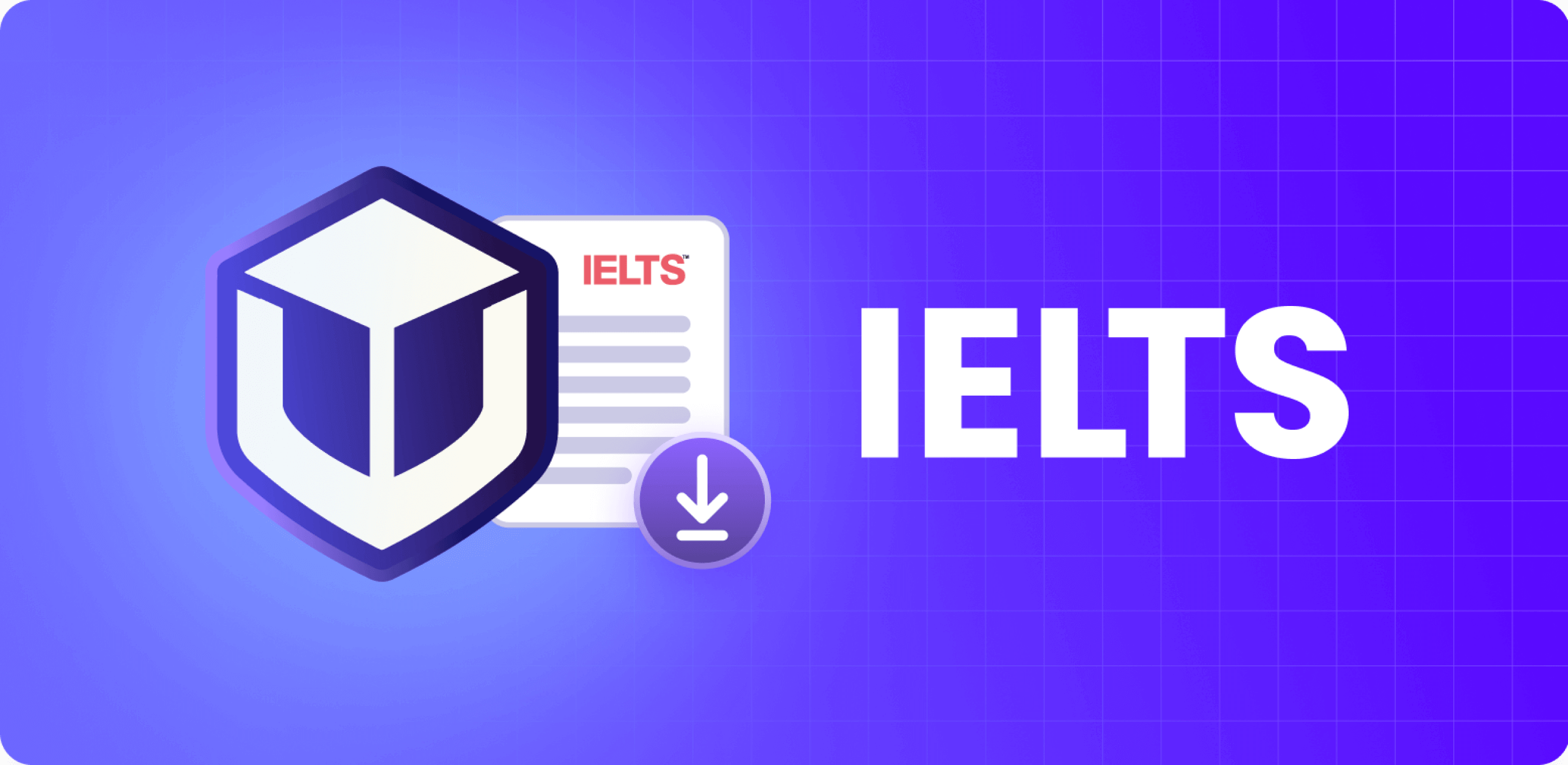To achieve a Band 7 or higher in IELTS Academic Writing Task 1, you must demonstrate a high degree of lexical precision, especially when describing process diagrams. However, many high-level students miss this score because they use generic or vague language, failing to select the specific verbs (like filter, assemble, or transport) required to accurately describe steps, transformations, and sequences.
Process charts remain a frequently tested visual in the Academic Writing section. The difference between a Band 6.5 and a Band 8 often hinges on replacing basic descriptive terms with precise, academic IELTS Process Chart Vocabulary and mastering the necessary grammatical structure, like the Present Simple Passive Voice. Using inappropriate vocabulary (e.g., trend words like plummet or dramatically) or poor structures is the single biggest barrier to securing that high score.
This complete 2026 guide provides the exact vocabulary, grammatical mastery, and a proven 5-Step System you need. We will equip you with specific, high-scoring language to confidently approach any flow chart IELTS vocabulary question, significantly boosting your Task Achievement and Lexical Resource scores.
What is a Process Diagram on the IELTS?
The IELTS Process Task 1 is part of the IELTS Academic Writing Task 1. It asks you to describe a diagram that shows how something is made or how it changes over time. Success in IELTS Task 1 hinges on maximizing quality within the strict 20-minute time allocation. A rigid, systematic method is necessary to ensure all required components (Introduction, Overview, Details) are included.
Step 1: Deep Analysis (The First 2 Minutes)
Your first action is to systematically deconstruct the prompt and the diagram itself. This initial analysis is crucial because it dictates the entire grammatical and structural approach of your essay.
- Identify the Core: Locate the raw materials, the final product or outcome, and the total number of stages involved.
- Determine Process Type (Crucial): Determine if the process is a Natural Cycle (e.g., life cycles) or a Man-made System (e.g., manufacturing, such as making bricks).
- Natural processes typically use the Active Voice.
- Man-made processes require the Present Simple Passive Voice.
Step 2: Introduction Drafting (Paraphrasing Mastery)
The introduction should be crisp in just two sentences. High-scoring paraphrasing involves changing the sentence structure, not just swapping out a few words, which is a common low-band error.
- Sentence 1 (Paraphrase): Rephrase the question using synonyms and introductory verbs like:
- The diagram illustrates…
- The given chart presents…
- Depicting the steps involved in…
- Tip: Do not copy the question directly.
- Sentence 2 (Overview Setup): State that you will outline the process, often mentioning the start and end points.
Step 3: Overview Formulation (The Central Thesis)
This is the second, separate paragraph and must state the main features without providing specific details. This paragraph is critical for your Task Achievement score.
- The Formula: State the total number of steps, the definite starting point, and the definite conclusion or final outcome.
- Cyclical Processes: If the diagram is a cycle, the overview must note that the process repeats indefinitely.
- Example: “The process chart shows the production of cheese in eight steps, beginning with cows grazing and ending with the delivery of packaged cheese.”

Get a Free IELTS Vocabulary Cheatsheet
With 350+ words you should know for a 7+ IELTS band score.
Step 4: Body Detailing (Logical Grouping and Flow)
Divide the main stages logically across two body paragraphs (Detail 1 and Detail 2). The integrity of your response depends heavily on using appropriate sequencing words to maintain coherence and cohesion.
- Structure: Follow the flow of the diagram sequentially.
- Linking: Use a variety of sequential adverbs and connectors (e.g., Subsequently, Thereafter, Following this) to connect ideas naturally and avoid repeating simple connectors like then or after that.
- Voice Application: Apply the grammatical voice determined in Step 1 (Passive for manufacturing, Active for natural).
Step 5: Final Review (Grammar and Collocation Check)
Before submitting, quickly check for the following high-band requirements:
- Tense: Check for the mandatory Present Simple Tense throughout.
- Accuracy: Verify the precise use of verb-preposition collocations. Misuse of dependent prepositions (e.g., converted by instead of converted into) is a high-level lexical mistake.
Specialized Vocabulary Categories for Band 8+
To achieve a high score, your choice of flow chart vocabulary IELTS must be precise, shifting focus from individual words to collocational phrases required for sequencing, action, and diagram description.
1. Vocabulary for Describing the Type and Sequence
Use these terms in your Introduction and Overview to establish context and structure.
| Function | Part of Speech | High Band Lexis Example | Example Use |
|---|---|---|---|
| Process Type | Adjectives/Nouns | Man-made, Natural, Linear process, Cyclical process, Complex mechanism | This process chart illustrates the natural hydrological cycle. |
| Introducing Stages | Verb/Phrase | The process commences with…, The initial stage involves… | The process commences with the collection of raw materials. |
| Sequential Flow | Adverb/Connector | Subsequently, Thereafter, Following this, After which | Subsequently, the chloroplast produces sugar and oxygen. |
| Ending/Repetition | Verb/Phrase | The cycle repeats indefinitely, The final output is channeled back to… | This cyclical process continues in a loop. |
2. Action and Transformation Verbs (The Core IELTS Process Chart Vocabulary)
These verbs should replace simple descriptive terms to ensure your response is precise and academic. Remember to use the Passive Voice for man-made processes.
| Function | Precise Verbs (Use as V3 in Passive Voice) | Example Sentence (Passive) |
|---|---|---|
| Collection | collected, gathered, obtained, harvested | The waste glass bottles are collected. |
| Movement | transported via, flows into, enters, sent to, delivered to, passed through | The liquid passes through several filters. |
| Refining | filtered, purified, distilled, treated, heated, sterilized, processed by | The material is processed by a heating machine. |
| Formation | moulded, joined, converted into, assembled, formed, produced | Cheese cubes are formed by a pressing tool. |
| Storage/Exit | stored in, goes into, flows out of, distributed | The items are stored in a dry chamber. |
3. Avoiding Irrelevant Vocabulary (A Crucial Band 7+ Tip)
Your flow chart IELTS vocabulary must be strictly relevant to sequence and transformation. A common low-band error is using vocabulary from Line Graphs, Bar Charts, or other Trend Visuals.
| Category | Words to AVOID in Process Diagrams | Why? |
|---|---|---|
| Trend/Change | Dramatically, Rocket, Plummet, Sharp increase, Steady decline | Process charts describe actions (e.g., transported, melted), not data trends. |
| Comparison | Higher than, In contrast to, Equal to | Process charts are sequential; they do not require comparative language. |
Grammatical Mastery-Using the Passive Voice
For high scores, you must demonstrate controlled use of the passive voice when describing man-made processes. This is necessary when the focus is on the material or product, not the worker or machine.
The Passive Voice Formula (Present Simple)
The core formula you must use is:
Object + is/are + Past Participle \ V3
- Example: The mixture is heated and filtered.
High-Scoring Passive Structures
You can demonstrate grammatical range by using more complex passive constructions:
- Passive with Preposition: Use precise prepositions for transformation, which boosts your Lexical Resource score.
- The material is converted into bricks.
- Waste is separated from impurities.
- Passive Infinitive: This is a highly advanced structure.
- The mixture is turned into bricks before being dried in the oven. (This demonstrates sophisticated control).
- Active Voice for Natural Cycles: Remember, for natural processes, stick to the simple active voice:
- Water evaporates when heated by the sun.
Structure and Execution-IELTS Process Diagram
Applying the right ielts flow chart vocabulary starts with following the examiner-approved structure for IELTS Academic Task 1.
Mandatory 4-Paragraph Structure
Your response must be organized into four distinct paragraphs:
- Introduction: Paraphrase the prompt + Overview sentence.
- Overview: State the number of stages, start point, and end point.
- Detail Paragraph 1: Describe the first half of the process stages.
- Detail Paragraph 2: Describe the remaining stages and the final output/outcome.
The Importance of Coherence and Cohesion
Coherence is achieved through logical flow, and cohesion is demonstrated by linking phrases. To avoid repetition, use a variety of linking phrases and object pronouns.
| Function | Linking Phrases (to replace “next”) |
| Sequence | Following this, After that, Subsequently, Thereafter |
| Completion | Once this step is completed, Upon completion, At the subsequent stage |
| Ordering | Firstly, Secondly, Finally/Lastly |
High-Scoring Example (Recycling Process)
The diagram illustrates the process of recycling discarded glass bottles. From the diagram, we can see three main stages: collecting the used bottles, recycling them, and finally delivering the new products to the market.
In the first stage, waste glass bottles are collected from designated points and transported by trucks to nearby recycling centres. Thereafter, the bottles are cleaned with high-pressure water to remove dust and other impurities. Following this, they are sorted into three groups based on colour.
Next, the sorted bottles are sent to glass factories, where they are crushed into fine pieces. These fragments are melted in a furnace at high temperatures to produce molten glass. The molten glass is then mixed with new liquid glass to create recycled bottles. In the final stage, the new bottles are filled with various beverages and distributed to stores for sale.
Conclusion:
The IELTS process chart vocabulary may seem difficult at first, but with practice and this precise lexical taxonomy, describing each stage clearly becomes manageable. Focus on identifying the starting and ending points, grouping related steps logically, and applying the best IELTS writing task 1 process vocabulary to maintain flow and accuracy. Remember, accuracy and clarity in describing each stage are key to higher scores. By systematically applying the 5-Step System and mastering the required Passive Voice constructions, you are well on your way to securing a Band 8+ score.
Ready to Practice for Your Overseas Study Dreams?
If you’re an Indian student planning for the September 2026 intake, start your prep now, and if you’d like expert guidance, LeapScholar experienced counsellors and experts are here to help. We offer personalized coaching, mock tests, and study materials to help you improve your writing score and overall performance.
Frequently Asked Questions (FAQs)
-
What is the best tense to use in an IELTS process chart?
The Present Simple Tense is mandatory for describing almost all process diagrams in IELTS, regardless of whether they are man-made or natural. If the process is man-made, you must use the Present Simple Passive Voice (e.g., The clay is heated).
-
Is it acceptable to use idioms in IELTS Academic Writing Task 1?
No. You cannot use idioms in Academic Writing Task 1 because the tone must remain strictly formal and academic. Idioms are only acceptable in the informal letter for the General Training Writing task.
-
Can I use complex words instead of simple words like ‘make’ or ‘put’?
Yes, you must. Achieving a high band is about accuracy in expression. You should substitute simple words like ‘make’ or ‘put’ with precise verbs like synthesized, purified, assembled, or moulded to strengthen your IELTS process diagram vocabulary.
-
How can I improve my process vocabulary IELTS?
Focus on learning verbs and connectors that describe change and sequence. Practice writing sentences using high-scoring transformation verbs like undergoes, passes through, is formed, and repeats. This consistent use of precise, academic vocabulary is what the examiner looks for.
-
How many stages should I group in the Detail Paragraphs?
You should logically divide the total number of stages across two body paragraphs. A general rule is to dedicate the first detail paragraph to the initial stages (raw material to processing) and the second to the final stages (assembly to distribution).
-
What are some common flow chart vocabulary IELTS words for sequence?
Common sequence words include firstly, next, then, finally, and lastly. For a higher score, use more advanced connectors like subsequently, thereafter, following this, and after which.
















Have Questions? Get Guidance to reach your Dream University
Connect with India's finest counsellors and biggest study abroad community.
Get Guidance